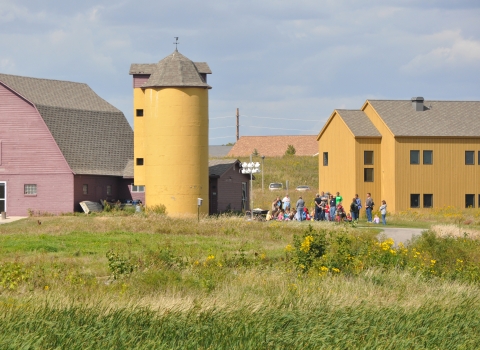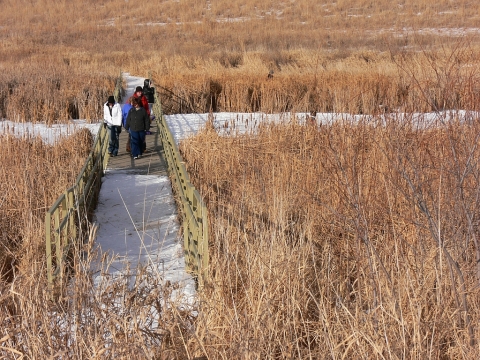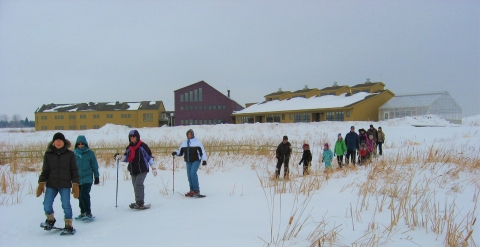Visit Us
We invite you to join us in enjoying and caring for this spectacular landscape. Wetland management districts offer us all a chance to unplug from the stresses of daily life and connect with our natural surroundings. The Prairie Wetlands Learning Center provides quality environmental education and outdoor recreation for visitors. We hope you visit as regularly and often as possible, because each experience holds unexpected wonders to delight your heart and mind and link you to land and sky, water and wildlife.
Location and Contact Information
- Fergus Falls Wetland Management DistrictView Details18965 County Highway 82 Fergus Falls, MN 56537-7726
- Prairie Wetlands Learning CenterView DetailsPrairie Wetlands Learning Center 602 State Highway 210 East Fergus Falls, MN 56537
Tours
The Fergus Falls Wetland Management District provides interpretive programs at the Prairie Wetlands Learning Center for the general public and for organized groups of 10 or more people. For more information, see our calendar of events or call us.
Our Species
Fergus Falls Wetland Management District is located in North America’s duck factory, a region historically rich in wetlands, prairie and waterfowl. We manage district lands most notably for nesting ducks, geese and swans, as well as migratory songbirds. You can observe and appreciate hundreds of species of birds, mammals, reptiles and amphibians through the seasons that are dependent upon this ecosystem to complete part or all of their life cycles.






















